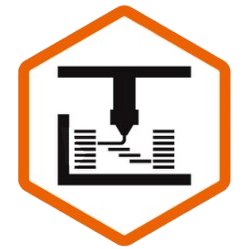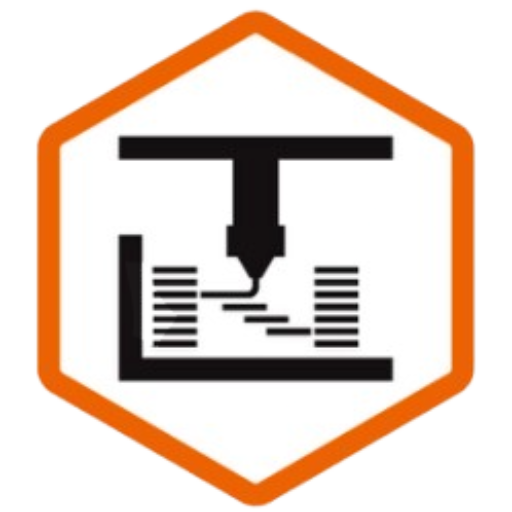This episode of the Infill Podcast features an interview with fellow YouTube content creator Alan Mandic from the channel “MandicReally“, who shares his journey into 3D printing and his decision to focus on it full-time.
In the episode, Jonathan and Alan explore the challenges of transitioning into full-time content creation, the balance between creating content and actually 3D printing, maintaining ethical standards in product reviews, and the biases and dynamics within the creator economy.
Watch or listen to the full episode here:
Episode Highlights
3D printing as a community-oriented hobby
The interview highlights the strong community aspect of 3D printing and the importance of open discussions within the maker community.
Transitioning to full-time content creation
Alan’s experience showcases the challenges and opportunities of transitioning from a hobbyist to a full-time content creator.
The impact of COVID-19 on content creation
COVID-19 provided an opportunity for content creators like Alan Mandic to focus on their passion and justify going full-time.
Maintaining ethical standards in product reviews
Alan and Jonathan discuss the challenges of balancing sponsorships with maintaining objectivity and ethical standards in product reviews.
The diversity of perspectives in the 3D printing community
The episode emphasizes the value of diverse perspectives in the 3D printing community, particularly in product reviews.
Full Episode Summary
Below you will find a full summary of the podcast interview with Alan, alongside time stamps for relevant discussion points:
Interview with Alan Mandic (00:00 – 08:54)
- Alan has professional experience in various trades including 3D printing, construction, and custom car building
- Alan got into 3D printing originally to expand his capabilities in custom car work
- He uses 3D printing for prototyping and creating trim pieces for cars
- Alan started a YouTube channel to fill a gap in the market when a YouTuber he liked stopped creating content
- His channel focused on car-related topics like metal shaping and fabrication
- Although the channel didn’t make much money, Alan was dedicated to creating weekly videos for two and a half years
- When he started making 3D printing content, it gained more traction than his car-related videos
- Alan decided to focus on 3D printing content full-time
Transitioning into a full-time content creator (08:20 – 16:45)
- Creating 3D printing content was more successful and enjoyable than car content
- Transitioning to full-time content creator was harder than expected
- COVID-19 provided an opportunity to focus on 3D printing and justify going full-time
- Freedom to work on what you want is worth more than money
The balance between content creation and 3D printing (24:12 – 32:31)
- 3D printing has a strong community aspect that is often overlooked.
- The more content creators focus on making videos about 3D printing, the less time they have to actually 3D print.
- Jonathan used to do a series on TikTok where he showcased everything he printed each week.
- His latest print is the main parts of a storage bin made from bamboo filament.
- He prefers using a smooth PEI plate as a print surface for his Voron printers.
- The bamboo X1 printer is currently his go-to printer because of its enclosed nature and reliability.
- He plans to enclose his Voron printer in the near future for better performance with higher temperature materials like ASA, ABS, and nylon.
Reviewing closed source printers and exploring other areas of making (32:00 – 39:48)
- Manual tuning has improved Alan’s printing results, as compared to automated tuning.
- Alan finds that the auto calibration and lidar settings are not adjustable, leading to defects in prints.
- He plans to modify the printer further and has upcoming projects for it.
- Alan wants to move away from being solely focused on 3D printing and explore other areas of making things.
- They have received positive feedback on their non-3D printing content but lower viewership compared to their traditional content.
- Jonathan mentions Alexandre Chappel, another YouTuber who successfully combines different types of content in their videos.
Incorporating 3D printing into various projects (39:17 – 47:05)
- Jonathan and Alan discuss the combination of maker content and 3D printing.
- The versatility of 3D printing allows it to be incorporated into various projects, such as woodworking and videography.
- Jonathan shares some modifications he has made to his printer, including insulation, quiet fan mod, fan support mod, Hydra AMS piece, bed upgrade, nozzle swap, and AMS relocation.
- He also mentions using software upgrades like Soft Fever Fork for better results.
- He plans to add a glass riser with an LED strip for better lighting inside the machine.
Improving printer performance and future projects (46:34 – 54:20)
- Jonathan mentions various projects he wants to do, including adding a poop shoot and using a Y splitter for filament feeding
- The average 3D printing time per day varies, sometimes it’s 24 hours and other times not at all
- He recommends the Creality CR-6 SE as an intermediate 3D printer that is upgradable, handles various filaments, and is inexpensive
- He discusses his approach to product reviews and building relationships with companies
- He mentions using the Flux laser cutter and Shining 3D Iron Star in future videos
Maintaining ethical standards in product reviews (53:49 – 1:02:04)
- Alan believes in being fair and transparent when it comes to reviewing products.
- Jonathan has been offered money to create videos about certain products, but they are cautious about maintaining their ethical standards.
- They mention the importance of clearly disclosing sponsorships and differentiating between reviews and sponsored content.
- Jonathan is concerned that their audience may perceive any content they create as a review due to their reputation for honesty and integrity.
- They discuss the challenges of balancing sponsorships with maintaining objectivity in their content.
- They acknowledge the financial pressure to accept sponsorships but also express the need to pay bills.
- The evolving expectations of sponsors present ethical dilemmas for creators.
- They discuss an example of a potential video comparing two printers, where bias may be present due to sponsorship.
- They emphasize that everyone has biases, even if they strive for honesty and transparency.
Biases in product reviews and the creator economy (1:01:33 – 1:09:20)
- Biases exist in product reviews, whether the reviewer received the product for free or purchased it.
- The concept of value may differ between someone who can afford to buy multiple products and someone who can only afford one.
- Free products allow creators to show them to people, which is a logical path for reviews.
- Influencers who scam their audience with promotions can harm the creator economy.
- Personal recommendations and endorsements from well-known individuals are powerful forms of advertising.
- Creators rely on alternative sources of income, such as Patreon, because they don’t pay for YouTube and viewers don’t watch many ads.
- Maintaining ethical standards and respecting the privileged position of creators is crucial for the success of the creator economy.
- Support from viewers through platforms like Patreon is essential for creators’ survival.
- Not everyone will enjoy or appreciate a creator’s content, and that’s okay. Building meaningful relationships within the community is important.
- The diversity of perspectives in the 3D printing community adds value to product reviews.

